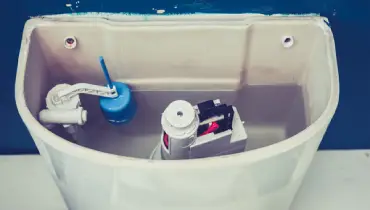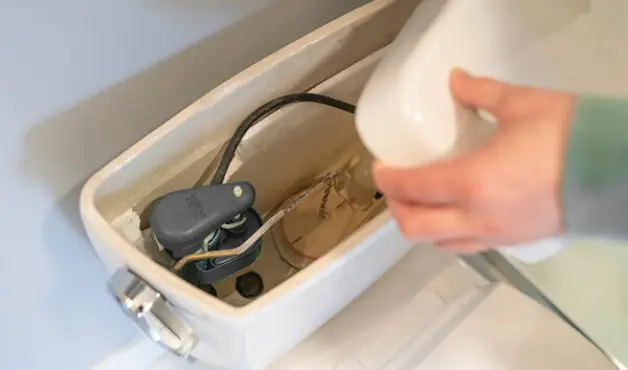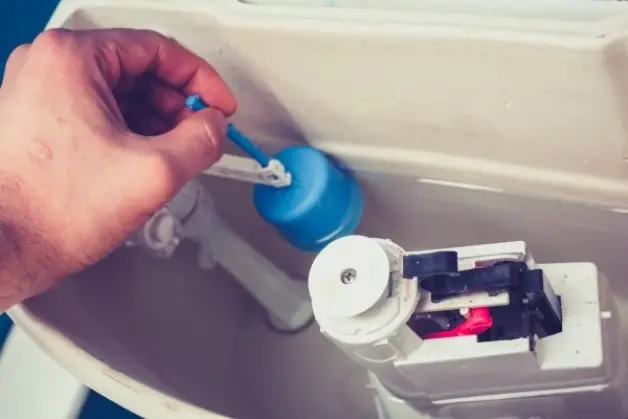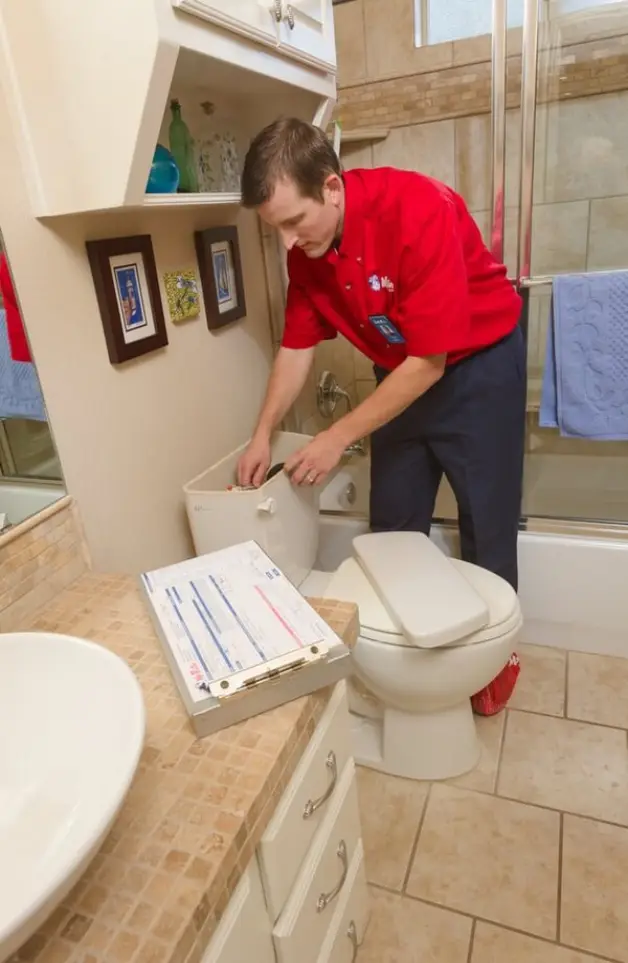
Do you have a running toilet? Better go catch it! Sorry, we had to get that one out of our system. In all seriousness, if you are really tired of constantly hearing the sound of trickling water in a running toilet, or you got an unpleasant surprise on your last water bill and want to cut out excess water usage, it's necessary to know how to stop a toilet from running. This problem affects everyone at some point, and in many cases it can be solved without calling your local plumber at Mr. Rooter Plumbing.
When it comes to a common issue such as a running toilet, the process of fixing it typically involves more troubleshooting than actual repair work. This guide to how to stop a toilet from running explains steps you can take to figure out what's happening and get it repaired so you can stop throwing money down the drain and get the peace and quiet back in your house. But if the tips below don't work, you're not on your own—call an expert plumber from Mr. Rooter and we'll get it working perfectly again with professional advice and a long-lasting repair solution.
Why It's Important to Fix a Constantly Running Toilet
Some people aren't overly concerned about taking the time to repair a running toilet, because while the sound may be annoying, at least the water is safely contained inside the fixture and isn't causing water leak damage. The problem that many don't consider is how much money you're wasting on water you're not even using. In fact, a running toilet is capable of wasting hundreds of gallons of water per day, which is likely more than your household's daily average water consumption. Needless to say, that can really inflate your water bill and cost you a noticeable amount of money for a waste of water that is just trickling away down your drain.
How to Stop a Toilet From Running

Ready to solve that running toilet problem? This issue is caused by one of the components inside your toilet tank, so the first thing you need to do is remove the tank lid and set it aside. Then, go through the following steps to troubleshoot the problem and get it fixed up, quickly and easily.
Untangle Lift Chain
When you take a good look inside your tank, you'll notice the flush lever is connected to a metal "arm" and there's a chain that leads from that arm to the toilet flapper at the bottom of your tank. If its chain is tangled up, the solution to your running toilet problem is simple—get it untangled and you're back in business. If the chain is too short and it's holding your flapper in an open position, it'll need to be replaced with a longer chain. Make sure your new chain isn't too long so it pulls taught and opens the flapper when its lever is pushed.
Push Down On Flapper
If a chain isn't what's causing your running toilet, you may be dealing with a faulty flapper that isn't seated firmly or has a deteriorated rubber seal and is letting a constant trickle of water into the toilet bowl. Reach into the tank and press the flapper down, then give it a couple test flushes. If everything seems to be working normally, it may have been a one-off situation. But if it happens again, your flapper needs to be replaced. Fortunately, that's an inexpensive and easy task, but if you're not willing or able to do it yourself, you can rely on Mr. Rooter.
Adjust Float Ball

It's possible that you have a constantly running toilet because the water level in your tank is either too high or too low. Your tank stops filling when the float ball reaches the right level, but if your float ball is in the wrong position on the float arm, it results in an incorrect fill level. The float arm is attached to the fill valve, and there's a screw on top of that fill valve. Turn the screw counterclockwise if you need to lower water levels in your tank, and turn it clockwise if you need to raise water levels.
Fix Damaged Float Arm
Is your ball float partially submerged in water? The float itself could have a hole in it, which means it needs to be replaced. But your running toilet could also be caused by a bent or otherwise damaged float rod. The arm itself is a relatively thin piece of metal, so it can get bent out of shape and sometimes it's possible to gently bend it back with your hands until it's straight again. If that's just not going to be possible, the float arm should be replaced. Alternatively, you could replace the entire fill valve mechanism for one with a float cup, which is less prone to damage.
Replace Fill Valve
Speaking of your fill valve, if you've gotten this far and our suggestions above didn't stop your running toilet, the fill valve probably needs to be replaced. If you're familiar with handiwork or you've done some light plumbing in the past, you can probably get this done on your own. However, it can be a little more difficult than the solutions we listed above, so if you're not sure or don't have time to tackle it, let your reliable plumber at Mr. Rooter Plumbing take care of it for you so you have the peace of mind that comes with knowing your running toilet is no longer wasting water.
If You Tried Everything and Still Have a Running Toilet, Call Your Local Mr. Rooter Plumber
It can be incredibly frustrating to try everything you can think of and still find yourself dealing with an irritating running toilet. When that happens, don't hesitate to call a professional plumber from Mr. Rooter Plumbing who can offer expert assistance on toilet repair and dozens of other plumbing repair and drain repair services designed to take care of your entire plumbing system.


